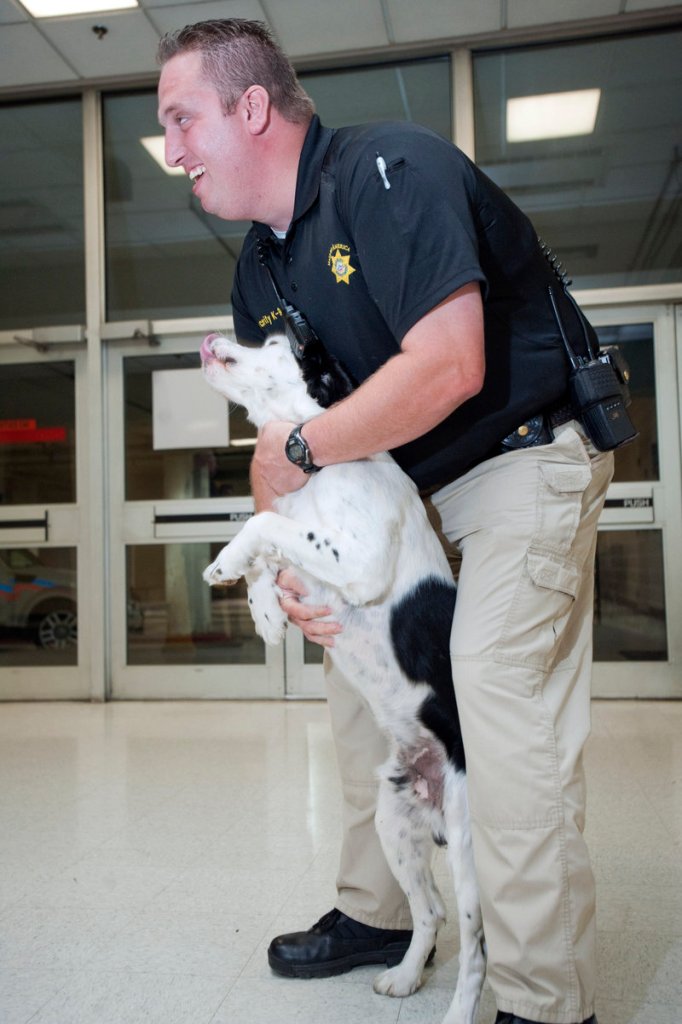BLOOMINGTON, Minn. – A janitor spots an abandoned diaper bag in the food court at the Mall of America. A bomb-sniffing dog and a security officer, there within minutes, examine the package while nearby shoppers are held a safe distance away.
No bomb. Case closed. But that scene is repeated at the nation’s largest shopping center 150 times a month.
Years ago, lost purses or shopping bags would go to the lost and found. But after the Sept. 11 attacks and a series of terror threats against malls, “we realized that bad guys don’t write ‘explosives’ on the side of packages,” said Maj. Douglas Reynolds.
He heads a 150-officer security force trained in Krav Maga, the official self-defense system of Israeli security forces. A plainclothes unit is solely devoted to behavioral profiling.
Terror threats against U.S. malls — federal authorities have charged suspects in at least three terror plots since the Sept. 11 attacks — have made huge behind-the-scenes changes to one of the most treasured American experiences — going to the mall.
Shoppers say they hardly notice the closed-circuit cameras, plainclothes officers and trained dogs, and believe the risk of getting attacked at a shopping center.
“The average shopper, they don’t walk in and think ‘this could be the end,’ ” said Don Heinzman, 77, of Elk River, Minn., having coffee with two friends at the Minnesota mall.
But overseas, especially in places like Israel and Turkey, terror attacks in malls occur with frightening regularity. Experts are worried that similar acts will eventually become commonplace in the U.S. In 2004, an anonymous call threatening a Los Angeles plot sent more than 100 officers to protect various shopping centers.
Two Ohio men — originally from Somalia and Pakistan — are serving prison terms in a 2003 threat to bomb Columbus-area malls. Another suspect is serving a prison term for a similar plot against a mall 90 miles north of Chicago. A Massachusetts pharmacist is awaiting trial on terror charges; prosecutors said he conspired with others to shoot down shoppers in U.S. malls and kill U.S. troops in Iraq.
In a 2006 report, the nonprofit RAND Corp. think tank found that there were 60 shopping mall attacks in 21 countries between 1998 and 2005 and that U.S. malls may not be well-prepared for them.
The International Council of Shopping Centers trained some 10,000 mall officers from 2003 to 2009 to better recognize terrorists and other threats. Experts at George Washington University designed the $3 million program, which was discontinued because of a lack of funding.
Paul Maniscalco, a senior research scientist at the university who was involved in developing the program, called shopping malls “soft targets.”
“I think they’re as safe as anyplace else in the U.S.,” he said. “Unfortunately, in an open and free democratic society, there’s certain trade-offs. The concept of a shopping center is a pretty complex social icon within our society. You can’t turn them into armed camps.”
Malachy Kavanagh, the spokesman for the International Council of Shopping Centers, said the latest threat to public places in the U.S. is not from organized terrorist groups, but “lone wolf” individuals.
Officers watch for people trying to engage mall guards in conversation or checking for security cameras, he said.
At the Mall of America, Christine Kimbrough of Upper Marlboro, Md., stopped to look at a tall metal monument that resembles two doorways and a door. It is a tribute to Tom Burnett Jr. of Bloomington, a passenger on United Airlines Flight 93, which crashed in Shanksville, Pa., on Sept. 11, 2001.
Kimbrough, 66, shook her head. “You’re always on alert,” she said. “You have to be now.”
Reynolds hopes shoppers think like Kimbrough. With 4.2 million square feet of space and more than 20,000 parking spots, it’s difficult for his officers to see everything. He’s instituted the Risk Assessment and Mitigation Unit — which is a team of plainclothes officers who perform behavior profiling and who look for suspicious objects.
His officers don’t carry guns but can make citizens’ arrests. There have been no terror arrests; most calls are about shoplifters, missing children and abandoned packages.
Reynolds said his officers must also be on the alert not just for terrorists, but also for volatile workplace or domestic arguments that could result in a mass shooting.
The mall has a control center where dispatchers monitor 12 closed-circuit TVs and field 120,000 calls for service a year.
Reynolds has visited Orlando, Fla., to learn from security experts there, and even uses some phrases similar to Disney’s security force.
Officers who are patrolling the mall are “on stage,” and inside the training room, there’s a large word above the door that leads to the mall: “SHOWTIME.”
Send questions/comments to the editors.



Success. Please wait for the page to reload. If the page does not reload within 5 seconds, please refresh the page.
Enter your email and password to access comments.
Hi, to comment on stories you must . This profile is in addition to your subscription and website login.
Already have a commenting profile? .
Invalid username/password.
Please check your email to confirm and complete your registration.
Only subscribers are eligible to post comments. Please subscribe or login first for digital access. Here’s why.
Use the form below to reset your password. When you've submitted your account email, we will send an email with a reset code.